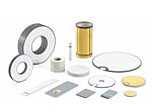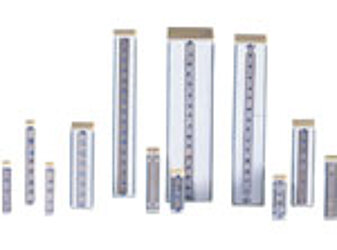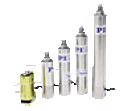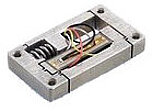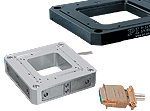Electrostrictive Actuators
Electrostrictive actuators are solid state actuators similar to PZT actuators. Although sometimes advertised as a recent discovery, the material has been around for many years. Electrostrictive actuators are made of a lead-magnesium-niobate (PMN) ceramic material. PMN is a non-poled ceramic with displacement proportional to the square of the applied voltage. PMN unit cells are centro-symmetric at zero volts. An electrical field separates the positively and negatively charged ions, changing the Dimensionss of the cell and resulting in an expansion. Electrostrictive actuators are operated above the Curie temperature which is typically very low when compared to Piezo materials.
Learn more "Reliable Piezo Motion Devices for Industrial and Space Applications"
Electrostrictive actuators exhibit less hysteresis (on the order of 3 %) than Piezo actuators, in a limited temperature range. Despite of the reduced hysteresis, they provide highly nonlinear motion because of the quadratic relationship between voltage and displacement. Also, they cannot be used in a bipolar mode with reduced electric field strength (see because reversing the electric field does not result in contraction. Furthermore, PMN actuators show an electrical capacitance four to five times as high as piezo actuators requiring significantly higher driving currents for dynamic applications.
Piezo materials are much more stable than electrostrictive materials in terms of strain sensitivity to temperature, specially over large (10°C) temperature variations. Both displacement and hysteresis of PMN materials are strongly dependent on the actuator temperature. When temperature goes up displacement decreases at low temperatures, where displacement is at a maximum, hysteresis reaches a maximum, too, restricting applications to those with lower dynamic requirements or imposing a need for a temperature stabilization sub-system.
If you have any questions, ask a PI engineer for help.
